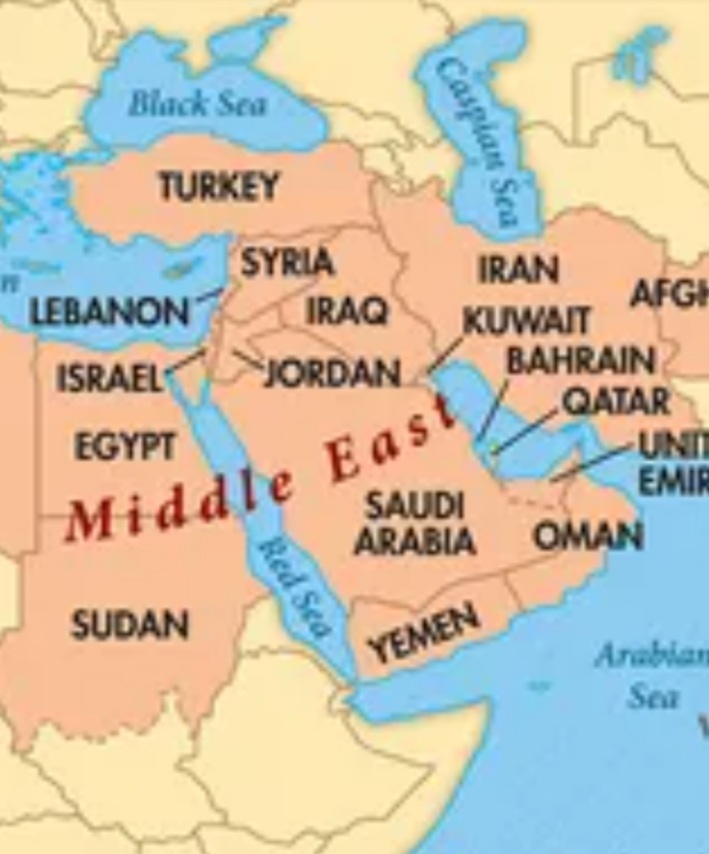
Map
By Wilson Egbodje
UNITED NATIONS SECURITY COUNCIL RESOLUTION 242
As noted in the quote credited to Dr. Henry Kissinger, U.S. National Security Adviser to President Richard Nixon and later Secretary of State to Presidents Nixon and Gerald Ford, at the beginning of the text, some aspects of the language or clauses in Resolution 242 seem nebulous to diplomats. However, the core of the text emphasizes:
“WITHDRAWAL OF ISRAELI ARMED FORCES FROM TERRITORIES OCCUPIED IN THE RECENT CONFLICT”
“The Recent Conflict” refers to the 1967 Arab-Israeli War. By implication only territories occupied by Israel in the 1967 war are to be negotiated. Pre-1967 occupied territories do not come under the purview of the Resolution. In other words the territories in question are: Egyptian territories in the Sinai Desert and the Gaza Strip; Syria’s Golan Heights; and Jordan’s West Bank and East Jerusalem. The other thorny aspect of the Resolution was the clause: “inadmissibility of the acquisition of territory by force”
In Carter’s Memoirs, “Keeping Faith” (1983), this clause became the bone of contention at the Camp David Summit hosted by President Jimmy Carter in September 1978. As President Carter pointed out during private negotiations with Prime Minister Menachem Begin of Israel, “The Arabs would all insist that Israel acknowledge the applicability of this principle in any treaties signed, because it would recognize that lands occupied after the Six Day War had not legally changed hands”.
Menachem Begin demanded an amendment to the clause. Much as he agreed that the principle was good he argued that “he would agree only if the word ‘belligerent’ was inserted before the word ‘war’ (to distinguish between wars of aggression and pre-emptive strikes for defensive purposes). Begin said Israel had been attacked by its Arab neighbours and therefore had a right to occupy lands taken in its own defence” This, the Israelis believed, should be the basis for all negotiations.
THE ABRAHAMIC ACCORDS
On August 15, 2020, the U.S. sitting President, Donald Trump announced a groundbreaking political development for the Middle East in what is today known as the “Abrahamic Accords”. Israel, the United Arab Emirates (UAE), and Bahrain signed a diplomatic agreement to establish diplomatic relations. The Accords were signed at the White House, Washington D.C. The Israeli delegation was led by the Israeli Prime Minister Benjamin Netanyahu. The UAE delegation was led by Foreign Minister Abdullah bin Zayed. The Bahrain delegation was led by Foreign Minister Abdulatif Al Zayani. It was named Abrahamic Accords because of a shared understanding that both parties are descendants of the Biblical Abraham.
This agreement is one of four that point to a possible full implementation of Security Council Revolution 242 by the principal parties to the Arab-Israeli conflict. The UN had proposed to the Arab nations and Israel in 1967 to adopt a workable formula that would guarantee permanent peace in the region. The Abrahamic Accords seem odd in the sense that hitherto strange bedfellows have come together. However, these became necessary, for obvious reasons. First, U.S political influence is believed to have waned in the region; secondly, the discovery and profitable exploitation of shale oil in the U.S has minimized American reliance on Middle East oil; thirdly the U.S had become wary of getting drawn into wars in the region at a time when Donald Trump, America’s President had committed to pulling U.S forces from foreign wars. There was also a perceived palpable threat from fundamentalist Shiite Iran towards the predominantly Sunni Arab nations collectively and, of course, Israel.
Consequently, the Gulf states have come to view Israel as a “hedge against the declining role of the U.S in the region”. On the other hand, there is also a Saudi-led Arab Peace Initiative which seeks full recognition of Israel by the Arab world in return for an Israeli favourable approach to resolving its conflict with Arab neighbours by granting Palestinian aspirations for statehood.
Jared Kushner, President Trump’s Special Envoy to the Middle East for the Administration’s Peace Process urged Prime Minister Benjamin Netanyahu to accept “normalization of relations and dump annexation” of Arab territories. The August 15 agreement therefore marked a crucial step forward in the implementation of UN Security Council Resolution 242: recognition of the right of Israel to exist as a state by Arab nations. In 1994 the Kingdom of Jordan recognized the statehood status of Israel. But by far the most outstanding aspect of this “entente” was its precursor, unveiled by President Anwar Sadat of Egypt in 1978 in his groundbreaking “Sacred Mission” to Tel Aviv.
In his first autobiography “In Search of Identity”, Anwar Sadat, a man of very deep convictions had during a 1977 conversation with U.S President Jimmy Carter emphasized his commitment to lasting peace in the region. His words, “I spelled it out clearly to Carter and emphasized that today we are as willing for peace as we were when, in 1971, I first pronounced my Peace Initiative- even more so. I also emphasized that I am willing to comply with the provisions of Security Council Resolution 242, provided Israel does the same”. Sadat’s position was premised on an earlier agreement for disengagement of forces brokered by Henry Kissinger and signed in Aswan, Egypt between Israel and Egypt after the Yom Kippur war in 1973.
Sadat however expressed his dissatisfaction over a statement earlier credited to Israel’s first Prime Minister David Ben Gurion. The latter expounded a Theory, “which says openly that peace should be imposed on the Arabs by force of arms”. As Sadat put it,… constituted the basis for the establishment of the State of Israel”. He stated further, “Peace cannot be imposed. If imposed, it will cease to be peace since one party thus dictates its terms to the other”. … Israel has so far not succeeded in dictating her terms in spite of our terrible 1967 defeat. And we, in spite of our victory in 1973, have not been able to dictate our terms to Israel”. Sadat thus counseled the U.S against supporting Israeli aggression and expansionism in the Middle East. It was this principle that guided Egyptian negotiators at the Camp David Summit.
THE CAMP DAVID ACCORDS
The Camp David Accords were the agreements signed at the end of the secret meeting held at the Camp David retreat in Maryland, USA in August 1978. The summit was convened at the instance of President Jimmy Carter who led the American delegation. The Israeli delegation was led by Prime Minister Menachem Begin while the Egyptian delegation was led by President Anwar Sadat. There were tense moments as the summit progressed. The positive results achieved was the brainwork of astute diplomacy on the part of U.S negotiators in crafting a fundamental breakthrough.
The two framework agreements proved a milestone in Middle East diplomacy. A Framework for Peace in the Middle East dealt with the issue of Palestinian territories. It was drafted on behalf of Palestinian authorities and representatives. It dealt with the issues of autonomy for Palestinians in the West Bank of the Jordan and the Gaza Strip; the status of Jerusalem and the withdrawal of Israeli troops from the Golan Heights. It was condemned by the United Nations because the Palestinians had no participatory role in the summit
The second a Framework for the Conclusion of a Peace Treaty between Egypt and Israel was significant for a number of reasons. It guaranteed peace and security of the State of Israel with Egypt’s recognition of its right to exist; the threat of collective and coordinated attacks from Arab states was put to rest. Israel’s consent to the removal of its settlements from the Sinai Desert over a period of three years was a major breakthrough for Security Council Resolution 242. In a sense it demonstrated that withdrawal from occupied territories in the Middle East was practicable. For this feat, both President Anwar Sadat and Prime Minister Menachem Begin shared the Nobel Peace Prize in 1980.








